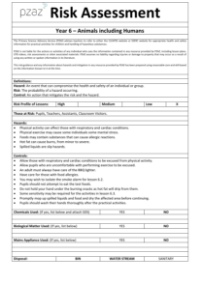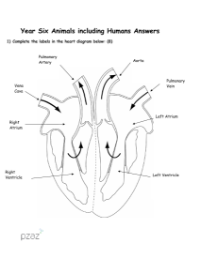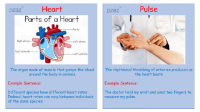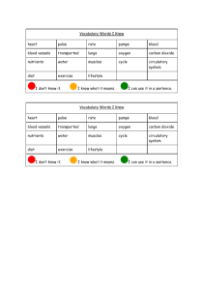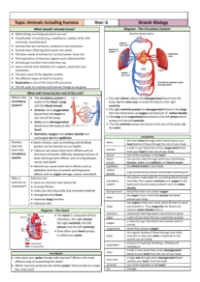Animals including Humans - Assessment
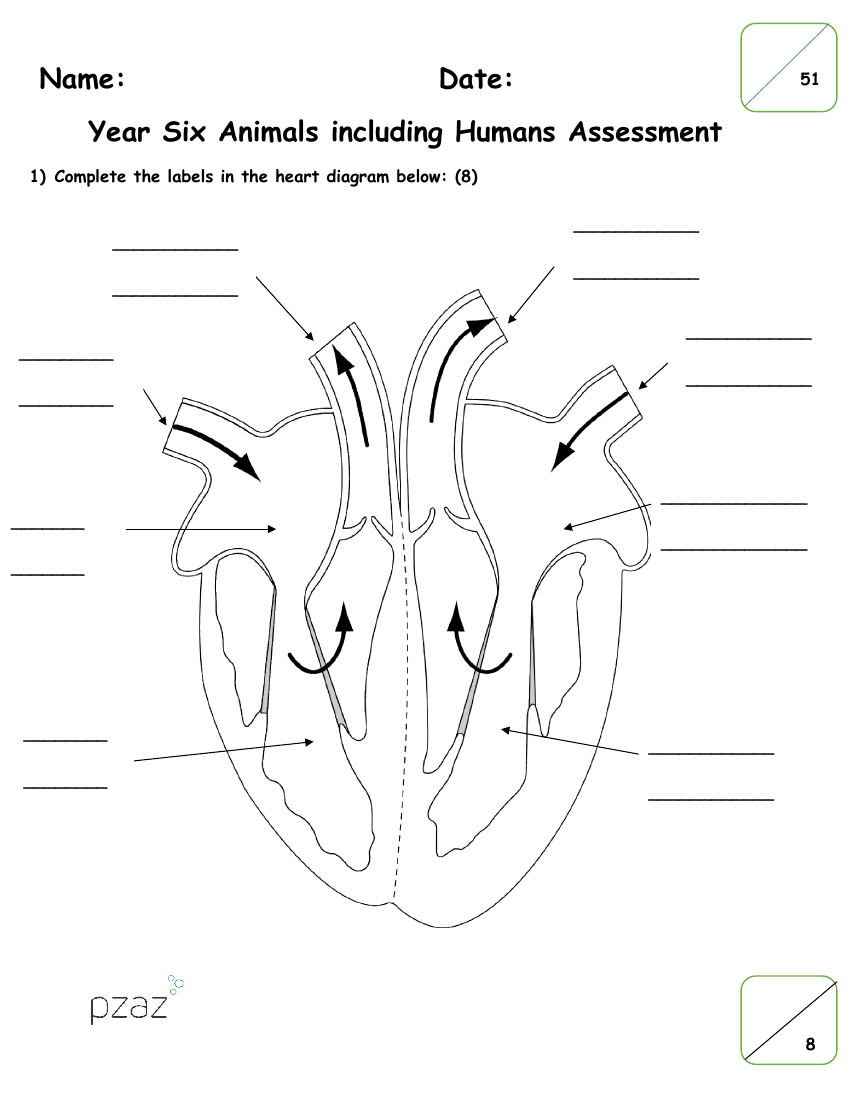
Science Resource Description
The Year Six Animals including Humans Assessment is a comprehensive evaluation of students' understanding of the human body's structure and functions. The assessment begins with a diagram of the heart, where students are required to label the various parts, testing their knowledge of cardiac anatomy. Additionally, they must explain the anatomical difference in the heart's muscle wall thickness, specifically why the left side is thicker, which relates to its function of pumping blood around the body. Understanding the circulatory system further, students answer questions about the direction of blood flow in arteries, the destination of the pulmonary artery, and identification of the waste gas expelled at the lungs.
Moreover, the assessment delves into the respiratory and circulatory systems, asking students to identify the vein that uniquely carries oxygenated blood. The digestive system is also explored through a diagram where students must label parts and describe their functions, including the rectum, which they are tasked to locate and define. Nutritional knowledge is tested by asking for four nutrient groups, the specific group used for growth and repair, and the food group rich in calcium. Students must also articulate the importance of vitamins and name health issues associated with overeating. They identify where nutrient absorption into the bloodstream primarily occurs and the process by which nutrients enter bodily cells. The assessment encompasses lifestyle factors too, with questions on exercise, distinguishing between true and false statements regarding its benefits. Finally, students consider the legal status of various drugs, reasons for drug use, and the impact of alcohol on the liver, rounding off a thorough test of their understanding of human biology and health education.


